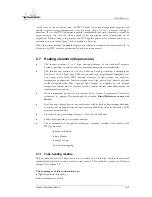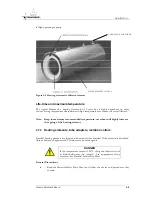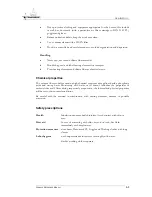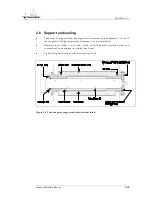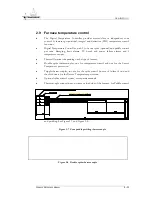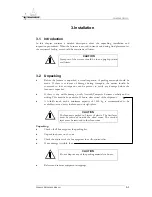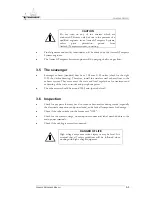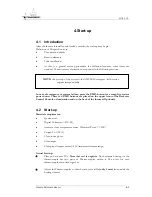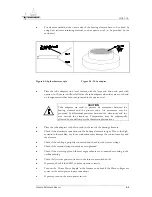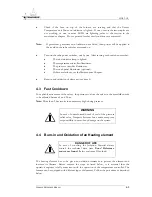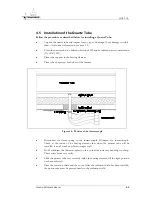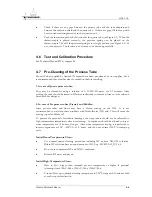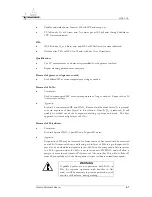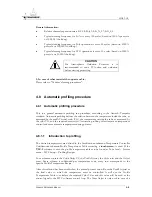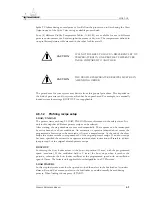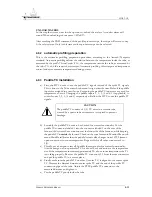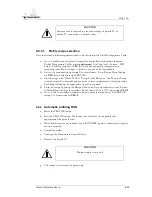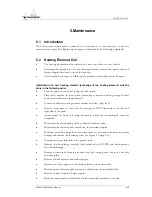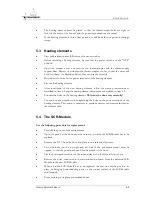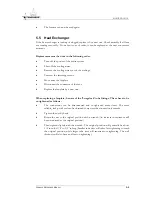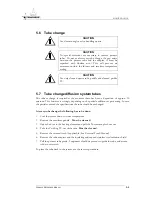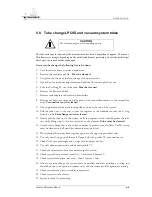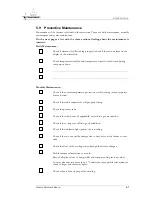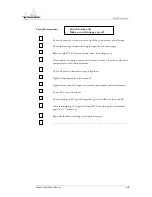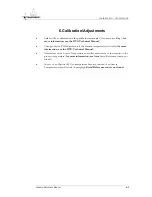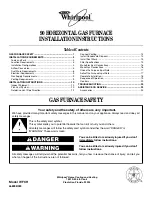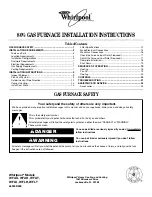
START-UP
•
Paddles and wafer boats: Insert at 500 to 800
0
C and ramp up.
•
TCA-Run dry O
2
at 4 liters/min. N
2
carrier gas at 300 ml/min. through bubbler at
30
0
C for time indicated.
OR:
•
HCL-Run dry O
2
at 4 liters/min. and HCL at 250 ml/min. for time indicated.
•
Oxidize after TCA or HCL for 30 min. with dry O
2
at 4 liters/min.
Qualification:
•
Use CV measurement or whatever is prescribed for the process involved.
•
Repeat cleaning procedures as necessary.
Removal of glasses or dopants or oxide:
•
Etch diluted HF at room temperature as long as needed.
Removal of Si
3
N
4
:
•
Conservative:
Etch in concentrated HF at room temperature as long as needed. Expect about 50
Å/min. removal rate.
•
Aggressive
:
Etch in 1:1 concentrated HF and HNO
3
. Removal will be much faster (It is essential
to avoid exposure of bare Crystal to this solution. Once Si
3
N
4
is removed, Si will
quickly be etched out of the component, malting it porous and weak. The best
approach is to leave a slight layer of Si
3
N
4
.).
Removal of Polysilicon:
•
Conservative:
Etch in 50 parts HNO
3
, 1 part HF and 20 parts DI water.
•
Aggressive:
Proportion of HF may be increased for faster removal, but care should be exercised
as with Si
3
N
4
removal above, and leaving a thin layer of Poly is a good approach. It
may also be worthwhile to deposit a layer of Si
3
N
4
on the components before service
in a Poly operation since the Si
3
N
4
is more resistant to HF:HNO
3
and will allow a
margin of error in etch time for Poly removal. Also note that Poly will not flake off
from silicon carbide as it does from quartz so some residue is normally accepted.
WARNING
If paddle handles are not precoated with Si
3
N
4
or
Poly (by separate operation with handles in flat
zone), it will be necessary to provide protection, such
as with a teflon sleeve, during etching.
F
URNACE
R
EFERENCE
M
ANUAL
4-7

